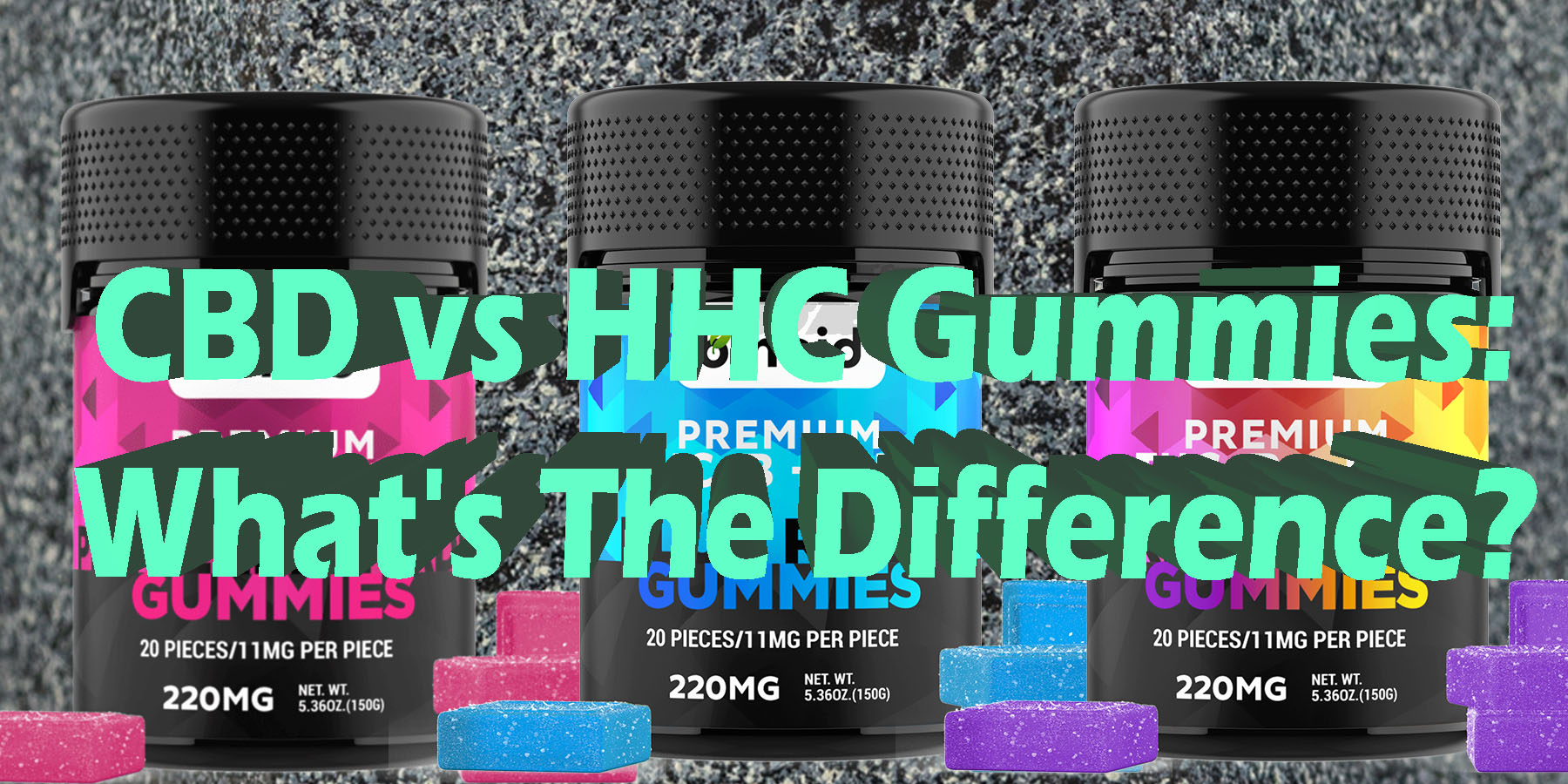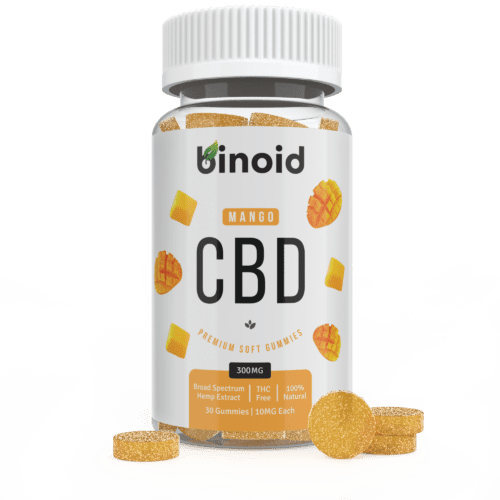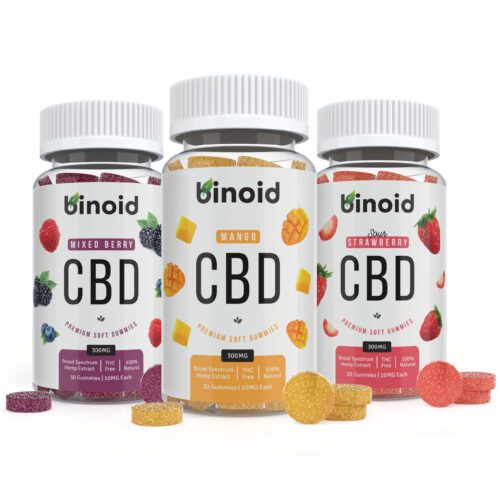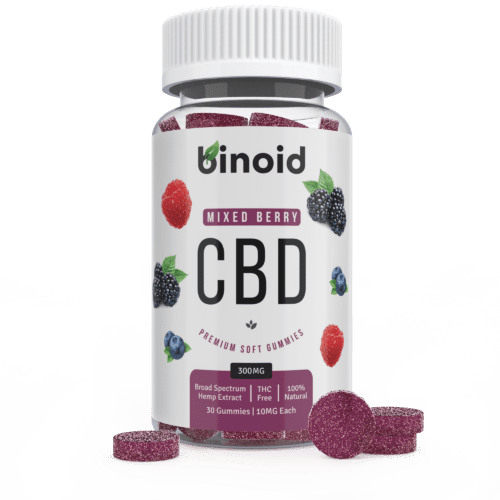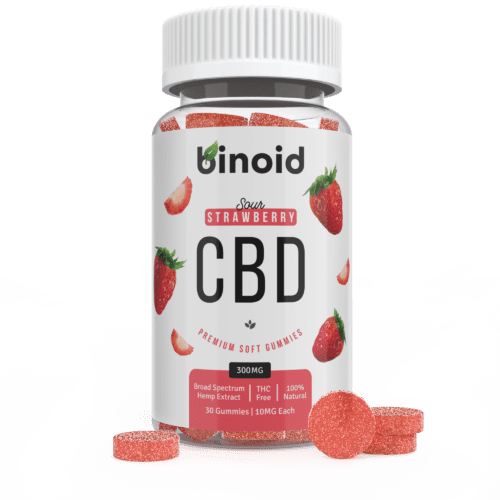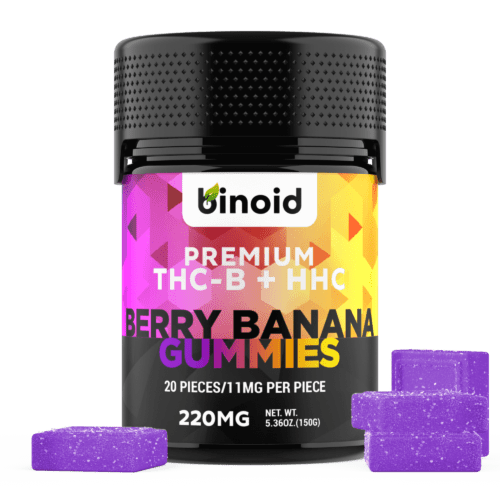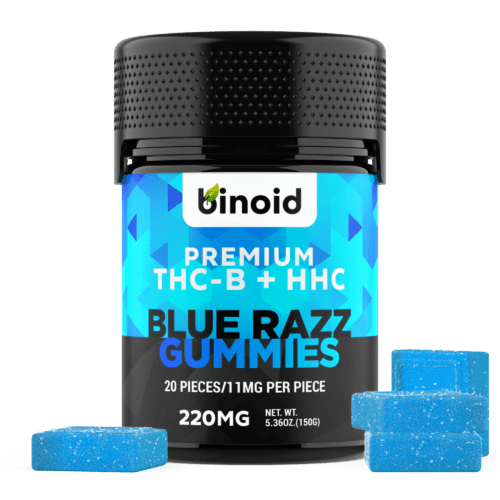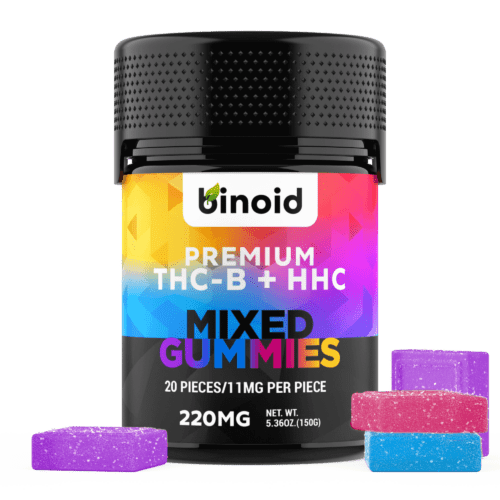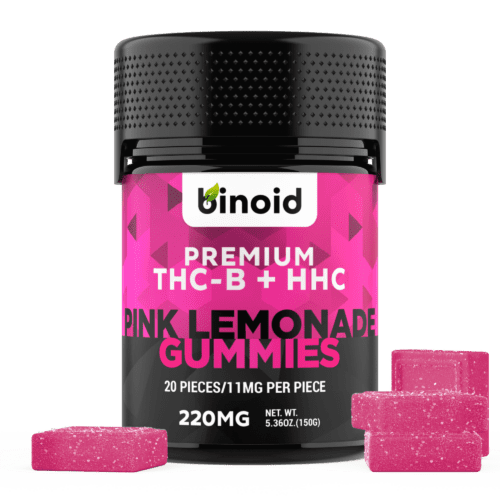Imagine yourself standing at the crossroads of two distinct paths in a magnificent botanical garden, each path promising a unique and fulfilling journey into wellness and blissful discovery. One path, well-trodden and universally inviting, leads into a serene arboretum filled with gentle, calming breezes, where every step brings a profound sense of tranquility and a harmonious balance to your inner landscape. It’s a journey of subtle yet pervasive serenity, ideal for those seeking a gentle embrace of peace without alteration of perception.
The other path, newer and gleaming with a distinct allure, ventures into a vibrant, sun-drenched grove where the air hums with a captivating, uplifting energy. Here, the experience is bright, clear, and distinctly euphoric, offering a gentle lift that enhances your surroundings with a joyful sparkle. This fascinating divergence in experience and intention is precisely what we explore today as we embark on an illuminating matchup: CBD gummies versus HHC gummies.
To Buy Cannabinoid Gummies Click Here
Recommended products
What are Cannabinoids?
To truly appreciate the nuances of modern hemp-derived products and to navigate this exciting marketplace with confidence and informed understanding, one must first journey to the molecular heart of the hemp plant and truly grasp the marvels known as cannabinoids. These are naturally occurring chemical compounds that serve as the primary drivers behind the vast and diverse range of effects that the cannabis plant family, including its non-intoxicating cousin, hemp, can produce. One can conceptualize them as the plant’s own intricate biochemical language, a sophisticated set of chemical messengers that possess the remarkable ability to communicate with the human body in a profoundly specific and interactive way.
To date, scientists have successfully identified over one hundred distinct cannabinoids, each boasting its own unique chemical structure and, as a direct result, its own signature properties and potential effects on human physiology and consciousness. The most famous of these are undoubtedly Tetrahydrocannabinol (THC), celebrated for its euphoric properties, and Cannabidiol (CBD), known for its non-intoxicating, balancing qualities. However, these two are merely the most visible stars in a massive and brilliant constellation of compounds that includes a host of other intriguing players like Cannabigerol (CBG), Cannabinol (CBN), and various structural analogs like the two distinct contenders in our matchup today.
The extraordinary mechanism through which cannabinoids interact with us lies within a sophisticated and vital biological network called the endocannabinoid system (ECS). This intricately complex system, which extensive research has confirmed is present in all vertebrates, acts as a master regulator within the body. It is a pervasive and fundamental web of receptors, metabolic enzymes, and internally produced cannabinoids (known as endocannabinoids, such as anandamide, often playfully dubbed the “bliss molecule,” and 2-arachidonoylglycerol or 2-AG) that works tirelessly around the clock to maintain a state of internal equilibrium, a biological concept known as homeostasis.
The ECS has a crucial role in modulating an incredibly wide array of our most important bodily functions, from mood and memory to appetite, sleep-wake cycles, sensory processing, and even aspects of immune function. The primary communication ports of this vast system are its receptors, most notably Cannabinoid Receptor 1 (CB1) and Cannabinoid Receptor 2 (CB2). CB1 receptors are found in their highest concentrations throughout the brain and central nervous system, while CB2 receptors are more densely populated in the peripheral regions of the body, particularly within the cells and tissues of the immune system. Phytocannabinoids—the cannabinoids derived from plants like hemp—bear a striking structural resemblance to our body’s own endocannabinoids.
This similarity allows them to bind to, influence, or otherwise interact with these CB1 and CB2 receptors, much like a specific key is designed to fit into and operate a designated lock, thereby initiating a cascade of effects. This intricate interaction between a phytocannabinoid molecule and an ECS receptor is precisely what triggers the spectrum of physiological and psychological effects associated with cannabinoid consumption. The potency and character of these effects are largely determined by how well a specific cannabinoid “fits” into the CB1 receptor.
Scientific innovation has shown that the structure of naturally occurring cannabinoids can be modified to create new compounds with different properties. For instance, HHC is a hydrogenated version of THC, where its molecular structure has been altered to remove a double bond, which in turn changes how it interacts with the CB1 receptor, leading to a more stable molecule with a uniquely clear-headed ‘high’.
Conversely, CBD acts quite differently; it has a very low binding affinity for both CB1 and CB2 receptors. Instead, CBD exerts its influence through a much broader and more complex set of indirect actions, modulating other receptor systems (like serotonin and vanilloid receptors) and influencing the activity of enzymes that break down endocannabinoids, thereby gently supporting the ECS without directly causing intoxicating effects. This beautiful and complex biochemical dance between plant-derived compounds and our own innate biological systems forms the fundamental science behind every single cannabinoid-infused product on the market.
Recommended products
What are Cannabinoid-Infused Gummies and How are They Typically Made?
Cannabinoid-infused gummies represent a significant and remarkably user-friendly evolution in the methods by which people choose to consume and experience the vast array of compounds derived from the versatile hemp plant. They are, at their essence, delicious edible candies that have been skillfully and precisely infused with a verified dose of a specific cannabinoid extract. These products typically begin with a base that is familiar to any candy enthusiast—often utilizing gelatin to achieve that classic, satisfyingly chewy texture, or fruit pectin as a high-quality, vegan-friendly alternative—and are then elevated with a wide spectrum of natural and artificial flavors, vibrant colors, and various sweeteners.
The meteoric rise in the popularity of this particular format can be attributed to a powerful and synergistic combination of factors that cater directly to the preferences and lifestyle of the modern consumer. Gummies offer a level of discretion that is unparalleled by other consumption methods; being visually and aromatically indistinguishable from any other candy, they allow for consumption without drawing unwanted attention. Furthermore, and perhaps most importantly for a consistent experience, they provide exceptional and reliable dosing accuracy.
Each gummy is manufactured through a meticulous and controlled process to contain a specific milligram amount of cannabinoids. This gives users absolute and unambiguous control over their experience, which is crucial for both novices and experts. This trifecta of convenience, appealing flavor profiles, and dosing precision has made gummies an incredibly approachable and enjoyable entry point for beginners, as well as a reliable and consistent staple for even the most seasoned cannabinoid connoisseurs.
The creation of a high-quality, safe, and effective cannabinoid gummy is a complex, multi-stage industrial process that represents a perfect marriage of culinary artistry and exacting chemical science. It is an intricate journey that demands meticulous attention to detail and the implementation of stringent quality control protocols at every single step to ensure that the final product is not only potent and enjoyable but also certifiably pure, safe, and flawlessly consistent from one gummy to the next, and from one batch to the next.
From the careful selection of hemp genetics and the cultivation of the source plant to the final, child-resistant, and hermetically sealed packaging, reputable manufacturers adhere to a strict and transparent production protocol that leaves absolutely nothing to chance. This fascinating journey from a humble hemp plant to a perfectly crafted, potent gummy is a powerful testament to the incredible advancements in modern agricultural science and extraction technology. Here is a comprehensive, deeply detailed step-by-step look at how these immensely popular edibles are typically brought to life:
Sourcing, Cultivation, and Harvesting of Superior-Grade Hemp: The entire production chain begins with the single most important foundational element: the hemp plant itself. Premium gummy manufacturers understand that a world-class final product can only be made from world-class raw materials. This process starts with the careful selection of superior hemp genetics, choosing specific cultivars that are known to be naturally rich in the desired cannabinoids (like CBD for conversion) and beneficial terpenes. These plants are then grown on licensed and regulated domestic farms, primarily in states like Colorado, Oregon, and Kentucky, which have well-established and sophisticated agricultural programs for hemp. The most reputable brands insist on sourcing hemp that is cultivated using certified organic and sustainable farming practices, which ensures the soil is free from contaminants and that no prohibited chemical pesticides, herbicides, or fungicides are used during the plant’s entire life cycle. Throughout the growing season, the plants are carefully monitored, and upon reaching their peak cannabinoid and terpene expression, they are harvested with care. The flower, or “biomass”—the part of the plant that is richest in these valuable compounds—is then meticulously dried and cured in climate-controlled environments to preserve its delicate chemical profile and prevent the growth of mold or mildew.
Application of State-of-the-Art Cannabinoid Extraction: With the premium, cured hemp flower ready for processing, the next critical stage is to efficiently extract the valuable cannabinoid compounds from the dense plant material. While several different methods exist, the undisputed gold standard in the high-end manufacturing industry is supercritical CO2 extraction. This highly sophisticated and capital-intensive process involves taking carbon dioxide (CO2) and subjecting it to extremely high pressure and very low temperatures. These specific conditions force the CO2 into a “supercritical” state, where it simultaneously exhibits the physical properties of both a liquid and a gas. This supercritical CO2 is then passed through a large chamber containing the ground-up hemp biomass. In this state, it acts as a powerful yet exceptionally clean solvent, efficiently dissolving the lipid-soluble cannabinoids, terpenes, and flavonoids from the plant material without damaging them through excessive heat or leaving behind toxic residues. Once the extraction cycle is complete, the pressure within the system is released, causing the CO2 to instantly revert to its normal gaseous state and evaporate completely and harmlessly, leaving behind a pure, potent, and entirely solvent-free crude cannabinoid oil. While less expensive methods like ethanol or hydrocarbon extraction are also used, they carry a much higher risk of leaving residual solvents if the oil is not properly and extensively purged afterward.
Intensive Purification via Winterization and Multi-Stage Distillation: The crude cannabinoid oil that is obtained from the initial extraction is incredibly potent but still contains a variety of undesirable components from the raw plant matter. These include things like fats, lipids, plant waxes, and chlorophyll, all of which can negatively impact the final product’s flavor, appearance, texture, and long-term stability. To create a cleaner, purer, and more palatable oil that is suitable for infusion into a gourmet edible product, this crude extract must undergo an intensive, multi-phase refinement process. The first step is typically winterization, a process in which the crude oil is mixed with food-grade ethanol and then frozen at sub-zero temperatures for a period of 24-48 hours. The extreme cold causes the unwanted fats, lipids, and waxes to congeal, solidify, and precipitate out of the solution, allowing them to be easily removed through a series of micro-filters. Following winterization, the now cleaner oil proceeds to the distillation stage. Using advanced short-path or wiped-film distillation equipment, the oil is gently heated under a deep vacuum. This precise control of heat and pressure allows individual compounds to be separated based on their unique boiling points and molecular weights. This highly precise step not only purges any remaining impurities but also allows manufacturers to isolate specific cannabinoids (creating a nearly 100% pure “isolate”) or to create a refined, high-potency oil with a broad spectrum of cannabinoids. The end result of this intensive purification is a beautiful, highly refined, transparent, and golden-hued oil known as distillate.
Molecular Conversion and/or Hydrogenation in Advanced Laboratories: This is a highly specialized, additional step conducted in a sophisticated laboratory environment that is necessary for novel cannabinoids like HHC. As CBD exists abundantly in hemp, it does not require this step if being used as an isolate or broad-spectrum extract. However, for HHC, which exists in only trace amounts naturally, it must be created from a more abundant precursor, typically hemp-derived CBD or Delta 9 THC (itself often derived from CBD). The process for HHC is called hydrogenation. It involves taking a THC molecule and placing it in a specialized reactor under high pressure with a catalyst. Hydrogen atoms are then introduced, which saturate the molecule by breaking a double bond in its chemical structure. Following these reactions, the resulting cannabinoid oil undergoes another rigorous series of purification and cleansing steps, such as chromatography, to remove any and all residual catalysts or potential byproducts, ensuring the final distillate is pure, safe, and ready for infusion.
Gourmet Formulation and Culinary Preparation of the Gummy Base: Concurrent to the cannabinoid extract being perfected in the laboratory, a separate culinary team prepares the gummy candy base on an industrial scale. This is a large-scale cooking process that requires the precision and consistency of a scientific experiment. For a classic gummy with that familiar firm chew, the recipe typically includes high-quality gelatin, purified water, sweeteners like corn syrup and granulated sugar, and food-grade acids such as citric acid or malic acid for a touch of tartness and flavor enhancement. For the rapidly growing vegan market, animal-derived gelatin is swapped out for fruit pectin, a plant-based gelling agent that creates a slightly softer, cleaner bite. At this stage, premium, often all-natural, flavorings derived from real fruit purees and botanical extracts are carefully selected to create the desired taste profile. Natural colorings, sourced from ingredients like beet juice, spirulina, or turmeric, are also added to give the gummies their vibrant, appealing appearance. All of these ingredients are meticulously measured and combined in massive, steam-jacketed industrial kettles and cooked to an exact temperature and viscosity, known as the Brix, to achieve the perfect, consistent gummy base.
Homogenization and Precision Cannabinoid Infusion: This is arguably the most critical and technically challenging step in the entire manufacturing process for ensuring product consistency and consumer safety. The prepared cannabinoid distillate—whether it be CBD, HHC, or a complex blend of multiple cannabinoids—is meticulously measured to a precise potency that is calculated for the entire batch, often down to the microgram. This is especially critical for potent compounds where a tiny measurement error can have significant consequences. This highly refined, thick oil is then introduced into the hot, liquid gummy mixture within the kettle and subjected to an intensive process of high-shear mixing and industrial-grade homogenization. This vigorous, powerful blending guarantees that the cannabinoid extract is perfectly and evenly distributed throughout every single drop of the gummy slurry, achieving a uniform molecular suspension. Without this essential step, the oil-based cannabinoids could pool together, resulting in “hot spots” where some gummies in the batch could have a dangerously high dose while others have virtually none.
Product Depositing, Molding, and Atmospheric Curing: Once the cannabinoid-infused gummy mixture is perfectly homogenized and has reached the ideal temperature for depositing, it is transferred from the cooking kettles to a specialized machine called a depositor. This machine operates with extreme precision, dispensing the exact same amount of the liquid gummy solution into vast trays of molds, ensuring each gummy is a uniform weight and size. These food-grade silicone or starch molds can be made in any number of conceivable shapes, from classic gummy bears and worms to sophisticated cubes, domes, rings, or custom brand-specific shapes. After being filled, the trays of molds are carefully transported into large, environmentally controlled curing rooms. Here, the gummies are left to set and cure, typically for a period of 24 to 72 hours, under tightly regulated conditions of temperature and humidity. This curing process is vital for several reasons: it allows the gelatin or pectin to fully set and cross-link, which develops the final desired texture and chewiness of the gummy, and it allows for a controlled amount of excess moisture to evaporate, which is absolutely crucial for ensuring the product’s long-term shelf stability and preventing microbial growth.
Final Finishing Touches and Optional Product Coating: After the gummies have fully cured and solidified, they are de-molded from their trays, often by mechanical means. At this point, they may go through a final finishing step to enhance their flavor, texture, and appearance, as well as their handling. This often involves placing the gummies into a large, rotating drum or “tumbler” where a specific coating is applied. For a classic sweet gummy, this might be a light coating of fine sugar crystals or a non-stick carnauba wax polish. For the ever-popular sour varieties, a specialized mixture of sugar and a souring agent like citric acid or malic acid is used to provide that signature tangy, mouth-puckering kick. This coating not only adds an extra dimension of flavor and sensory experience but also serves the very practical purpose of helping to prevent the individual gummies from sticking together in the final packaging.
Mandatory, Full-Panel Third-Party Laboratory Testing: Before a single gummy from a completed batch is ever packaged for sale, a reputable and transparent brand will send representative samples to an independent, ISO 17025-accredited, third-party laboratory for a comprehensive battery of analytical tests. This is the most crucial, non-negotiable step for guaranteeing consumer safety, product legitimacy, and brand integrity. The lab performs a series of tests to verify several key metrics. The cannabinoid potency test confirms the exact milligram amount of CBD, HHC, and any other cannabinoids present in the product, ensuring the product is accurately labeled and legally compliant. The full panel safety analysis screens for a wide range of potential contaminants, including any residual solvents left over from extraction or synthesis, heavy metals (like lead, arsenic, and mercury) that may have been absorbed from the soil, dozens of specific pesticides, and microbial contaminants like mold, yeast, E. coli, and salmonella. The resulting multi-page report is called a Certificate of Analysis (COA), and it must be made easily accessible to all consumers.
Secure, Compliant, and Informative Packaging and Labeling: The final step in this intricate and carefully controlled process is to package the fully tested and approved gummies into their final retail containers. To protect the integrity, freshness, and potency of the product, the packaging must be both hermetically sealed and opaque to shield the gummies from degradation due to oxygen and UV light. In most jurisdictions, the packaging is also legally required to be certified as child-resistant. The product’s label must be clear, accurate, and fully compliant with all applicable state and federal regulations. A compliant label should clearly state the type and amount of active cannabinoid per gummy and per package, a full list of all ingredients and potential allergens, detailed nutritional information, suggested usage instructions and stern warnings, manufacturing and expiration dates, and, critically, a specific batch number and a scannable QR code that links directly to the third-party lab test results (the COA) for that exact batch, ensuring the ultimate level of consumer transparency and trust.
Recommended products
Breaking Down Today’s Cannabinoid Gummies Matchup: CBD Gummies vs. HHC Gummies
With a firm and deeply detailed understanding of the core science that governs cannabinoids and the meticulous, multi-stage industrial process required to craft a premium infused gummy, we can now turn our undivided attention to the main event. This is a fascinating matchup, not of raw power against raw power, but of two fundamentally different approaches to engaging with the ECS, each offering a distinct experience for the user. In one corner, we have the widely celebrated and universally accessible CBD, known for its gentle, balancing influence and non-intoxicating properties.
In the opposing corner stands the intriguing and potent HHC, a cannabinoid that has quickly garnered a reputation for delivering a uniquely clear-headed and uplifting euphoria. Their compelling matchup is not about determining a simple winner, but about deeply understanding the significant differences between a non-intoxicating, balancing experience and a distinctly euphoric one, empowering you to make a safe and informed decision tailored to your individual preferences and needs.
Contender #1: CBD Gummies
CBD gummies have rapidly ascended to become one of the most recognizable and widely embraced forms of cannabinoid consumption in the global wellness landscape. Their pervasive popularity stems from a compelling combination of delightful flavor, supreme convenience, and, most importantly, their unique ability to foster a profound sense of calm and gentle balance without inducing any intoxicating effects.
They represent a harmonious and approachable entry point into the expansive world of cannabinoids, appealing to a vast demographic that seeks subtle support for overall well-being and a touch of daily tranquility without altering their state of mind. CBD gummies are not about reaching for an altered perception; they are about embracing a more centered and composed version of your everyday self, offering a gentle yet powerful embrace of inner equilibrium.
The star compound behind the widespread appeal of these popular edibles is Cannabidiol (CBD), and unlike its famous cousin, Delta 9 THC, CBD is celebrated precisely because it is non-intoxicating; it does not produce the “euphoric” effects typically associated with cannabis. This fundamental difference lies in its unique interaction with the body’s endocannabinoid system (ECS). Instead of binding directly and strongly to the primary cannabinoid receptors (CB1 and CB2) like THC does, CBD exerts its influence through a far more intricate and indirect mechanism.
It’s believed to gently modulate the activity of these receptors, influencing how other cannabinoids bind, and even interacting with other non-cannabinoid receptor systems, such as serotonin receptors, which are crucial for mood regulation. Furthermore, CBD is known to inhibit the enzymes responsible for breaking down the body’s own naturally produced endocannabinoids, like anandamide (often called the “bliss molecule”).
By preventing the rapid degradation of these endogenous compounds, CBD effectively prolongs their presence and activity within the ECS, thereby subtly supporting the system’s efforts to maintain overall homeostasis and promoting a pervasive sense of calm and balance throughout the body and mind. It is this multifaceted and indirect action that contributes to the subtle yet profound, non-euphoric sensations of relaxation and well-being reported by countless users.
The market for CBD gummies is incredibly vast and diverse, offering an unparalleled range of choices to consumers. This breadth of options reflects CBD’s versatility and its broad appeal across various demographics and for different personal preferences. From potency levels to ingredient formulations, the variety ensures that there’s a CBD gummy designed for almost every individual:
Shapes & Sizes: CBD gummies are available in virtually every conceivable shape and size, from classic gummy bears and fruit slices to sophisticated cubes, spheres, and custom branded molds. The size and shape are often designed to appeal aesthetically and sometimes to facilitate easy dosing. Potency levels are highly varied, catering to both novices and experienced users. Common doses range from a mild 5mg to 10mg per gummy, ideal for those just starting or seeking very subtle effects, up to more substantial doses of 25mg, 50mg, or even higher per gummy for those with greater needs or tolerances. The flexibility in dosing allows users to precisely tailor their intake for optimal results.
Flavors: The flavor spectrum of CBD gummies is as expansive as the candy aisle itself. Popular options include a kaleidoscope of fruit flavors like juicy Strawberry, tangy Blue Raspberry, sweet Mango, refreshing Watermelon, and zesty Citrus blends. Beyond these traditional favorites, many brands offer more gourmet or unique flavor combinations such as peach rings, sour worms, or even mint and coffee-infused varieties. Reputable manufacturers prioritize natural flavorings and colorings, often derived from real fruit juices and botanical extracts, ensuring a delicious taste experience that effectively masks any residual earthy notes from the hemp extract.
Potential Use of Live Resin or Live Rosin: For those seeking a more holistic and robust CBD experience, gummies infused with live resin or live rosin are a premium option. These full-spectrum extracts are produced from fresh, flash-frozen hemp plants, meticulously preserving the plant’s complete profile of cannabinoids, terpenes, and flavonoids that are typically lost during traditional drying and curing. When integrated into CBD gummies, this rich entourage of compounds can amplify the overall effects through the “entourage effect,” creating a more profound and nuanced sense of calm and balance that reflects the true essence of the whole plant.
Occasionally Strain-Infused: To further refine the subtle effects of CBD, some brands infuse their gummies with botanical terpene blends designed to mimic the profiles of specific cannabis strains. For example, a CBD gummy with a terpene profile reminiscent of an Indica strain (like Myrcene or Linalool) might aim to enhance feelings of deep relaxation and tranquility, making it ideal for evening use. Conversely, a Sativa-like terpene blend (rich in Limonene or Pinene) could promote a more uplifting and clear-headed experience, suitable for daytime use. These terpene infusions allow for a more personalized and directed sense of well-being.
Sometimes Combined with Functional Ingredients: This is a very common and popular innovation within the CBD gummy market. Manufacturers frequently blend CBD with other complementary, non-cannabinoid ingredients to create purpose-driven products. For example, CBD gummies marketed for promoting restful sleep often include Melatonin, a natural sleep-aid hormone, or calming botanicals like chamomile, valerian root, or L-Theanine. Other formulations might include vitamins (like B12 for energy or Vitamin C for immune support), adaptogens (like Ashwagandha or Reishi mushroom for overall balance), or even probiotics. These additions synergistically enhance CBD’s inherent properties to support specific aspects of well-being.
Sometimes Combined with Other Cannabinoids: CBD’s non-intoxicating nature and its balancing properties make it an ideal cannabinoid to blend with other compounds, both non-intoxicating and psychoactive, to create highly customized effects.
Other Non-Intoxicating Cannabinoids: It is very common to find CBD paired with other non-psychoactive cannabinoids such as CBN (Cannabinol), often used in sleep formulations due to its reputed sedative properties, or CBG (Cannabigerol), which is gaining recognition for its potential to promote a sense of overall calm and support a clear mind. These blends aim to enhance the gentle, balancing effects of CBD.
Mild Potency Cannabinoids: CBD is often combined with mild psychoactive cannabinoids like Delta 10 THC or THCV. Delta 10 can add a subtle uplifting and energetic quality, while THCV is known for its clear-headed and stimulating properties. These blends are designed for those seeking a very gentle lift with a strong foundation of balance from the CBD.
Moderate Potency Cannabinoids: This is an exceptionally popular category. CBD is frequently blended with Delta 8 THC, Delta 9 THC (in legally compliant amounts), or Delta 11 THC. The CBD acts as a powerful modulator, taking the euphoric effects of these moderate compounds and smoothing out the edges, potentially reducing the likelihood of overwhelming feelings while still allowing for a pleasant and noticeable sense of bliss and relaxation.
Strong Potency Cannabinoids: For experienced users seeking a potent, yet potentially more managed, euphoric experience, CBD is increasingly found in blends with stronger psychoactive cannabinoids like HHC, THC-P, THC-JD, THC-B, or THC-H. In these formulations, CBD does not eliminate the intoxicating effects of the stronger compounds but rather works to temper them, promoting a more grounded and comfortable experience, often described as a more “chilled out” or “relaxed” version of a high-potency effect.
The overall effects of a CBD gummy are universally described as subtle, gentle, and non-intoxicating. Users consistently report a pervasive sense of calm, mental clarity, and profound physical relaxation without any alteration of consciousness or a “high” feeling. Many describe it as a return to a more balanced and harmonious state, a feeling of being centered and composed amidst the daily hustle.
When CBD is delivered as a full-spectrum product or combined with terpene-rich live resin, the “entourage effect” can enhance these subtle benefits, leading to a richer and more comprehensive sense of well-being. Furthermore, when expertly blended with other non-intoxicating cannabinoids like CBN for nighttime use or CBG for daytime clarity, the specific desired outcomes can be gently amplified. Even when combined with psychoactive cannabinoids, CBD is often employed to modulate the intensity, providing a more grounded and comfortable experience of euphoria and deep relaxation.
Recommended products
Pros & Cons
CBD gummies are a cornerstone of the modern cannabinoid market, offering a unique set of advantages and a few considerations for consumers. A thorough understanding of these points is crucial for making an informed decision about integrating CBD into one’s daily routine.
Pros:
Non-Intoxicating Experience: The primary and most significant advantage of CBD is that it does not produce any psychoactive “high.” This makes it suitable for individuals who wish to experience the subtle benefits of cannabinoids without altering their state of mind, allowing for use at any time of day or night.
Promotes Gentle Calm and Relaxation: Users consistently report that CBD fosters a pervasive sense of calm, tranquility, and mental composure. It’s often chosen to support a serene mood and encourage profound physical relaxation, contributing to overall well-being.
Federally Legal and Widely Accessible: Derived from hemp with less than 0.3% Delta 9 THC, CBD is federally legal in the United States under the 2018 Farm Bill. This widespread legality means CBD gummies are easily available online and in retail stores across almost all states.
Excellent for Beginners and Sensitive Individuals: Due to its gentle, non-intoxicating nature, CBD is an ideal entry point for individuals new to cannabinoids or those who are sensitive to psychoactive compounds. It offers a safe and approachable way to explore the plant’s potential.
Versatile in Formulations (Full Spectrum, Broad Spectrum, Isolate): CBD is available in various forms: Full Spectrum (contains all cannabinoids and terpenes, including trace THC), Broad Spectrum (contains all cannabinoids and terpenes, but no THC), and Isolate (pure CBD). This versatility allows users to choose a product that best suits their preferences regarding the presence of THC.
Minimal Risk of Side Effects: CBD is generally well-tolerated, even at higher doses, with a very low incidence of adverse effects. Any reported side effects are usually mild and include slight drowsiness or minor digestive upset.
Compatible with Functional Ingredients and Other Cannabinoids: CBD’s balancing properties make it an ideal base for blends. It pairs exceptionally well with other non-intoxicating compounds for targeted support (e.g., CBN for sleep) and can gently temper the effects of psychoactive cannabinoids, leading to a more grounded experience.
Discreet and Convenient Consumption: CBD gummies offer all the inherent advantages of edibles—they are pre-dosed, portable, taste delicious, and can be consumed discreetly without any smoke or vapor, making them a user-friendly option for any setting.
Cons:
No Psychoactive Euphoria: For individuals seeking a noticeable “high,” CBD gummies on their own will not provide that experience. While they promote calm and well-being, they do not alter consciousness in a recreational way, which can be a drawback for some users.
Subtle Effects May Not Be Noticeable to Everyone: Because CBD’s effects are often subtle and gentle, some individuals, especially those accustomed to more pronounced psychoactive experiences, might find them less noticeable or impactful. Consistency in use is often key to appreciating its full spectrum of benefits.
Potential for Drug Test Failure (Full Spectrum): While CBD isolate and broad-spectrum products should contain no detectable THC, full-spectrum CBD products contain trace amounts of Delta 9 THC (below 0.3%). While unlikely to cause a positive result with casual use, consistent, high-dose consumption of full-spectrum CBD could theoretically lead to a positive drug test for THC.
Quality and Purity Concerns in an Unregulated Market: Despite its popularity, the CBD market is still largely unregulated by the FDA. This lack of oversight means product quality and accuracy can vary significantly between brands. Consumers must be diligent in selecting reputable brands that provide comprehensive third-party lab testing to ensure product purity and stated potency.
Contender #2: HHC Gummies
Now, we shift our focus to an intriguing and relatively newer contender in the cannabinoid arena: HHC gummies. HHC represents a fascinating advancement in the world of hemp-derived compounds, offering a unique profile of effects that many users describe as a balanced and clear-headed euphoria. HHC has garnered significant attention for its enhanced stability and its distinct psychoactive experience, which is often likened to a smoother, less intense version of Delta 9 THC but with a notable uplift.
These gummies are designed for individuals seeking a powerful yet manageable experience, positioning them as an excellent alternative for those who find Delta 8 too mild but wish to avoid the sometimes overwhelming intensity of more potent cannabinoids. HHC gummies signify a sophisticated step forward in personalizing cannabinoid enjoyment.
At its core, Hexahydrocannabinol (HHC) is a hydrogenated derivative of THC, meaning that HHC is essentially a THC molecule that has undergone a process called hydrogenation, where hydrogen atoms are added to its chemical structure, specifically breaking the double bonds present in the naturally occurring Delta 9 THC molecule. This chemical modification, first achieved by chemist Roger Adams in 1944, gives HHC a significantly longer shelf life and increased resistance to degradation from heat and UV light, making it a remarkably stable cannabinoid.
While HHC occurs naturally in cannabis pollen and seeds in very minute quantities, the HHC found in commercial products is almost exclusively produced in a laboratory setting. Typically, Delta 9 THC (which itself is often synthesized from hemp-derived CBD or THCA to remain federally compliant) serves as the precursor, undergoing a catalytic hydrogenation process in a specialized reactor to yield HHC. This process produces two main stereoisomers: (9R)-HHC and (9S)-HHC. It is generally understood that the (9R)-HHC isomer binds more effectively to the CB1 receptors in the endocannabinoid system, leading to the euphoric effects.
Recommended products
The market for HHC gummies has rapidly diversified, offering a wide array of choices that cater to various preferences while capitalizing on HHC’s unique properties. This expansion reflects HHC’s growing popularity and the industry’s continuous innovation in delivering tailored cannabinoid experiences:
Shapes & Sizes: HHC gummies are available in a broad spectrum of appealing shapes and sizes, from classic fruit-inspired designs and gummy bears to more contemporary cubes and custom brand molds. The potency per gummy is a crucial aspect, and manufacturers generally offer a range to accommodate different user tolerances. For individuals new to HHC or those with a lower tolerance, smaller gummies containing doses of 5mg to 15mg are common. More experienced users, however, can find higher potency options ranging from 25mg to 50mg per gummy. This variety allows for more precise control over the dosage, which is particularly important given HHC’s potency and its distinct effects.
Flavors: The flavor profiles for HHC gummies are as diverse and enticing as those found in any premium edible market. Popular options often include a vibrant selection of fruit flavors such as luscious Strawberry, tangy Blue Raspberry, juicy Watermelon, and exotic Mango. Beyond these single-note classics, many brands also craft more intricate and sophisticated blends like Tropical Punch, Berry Medley, or Citrus Burst. Reputable manufacturers frequently prioritize the use of natural and high-quality flavorings, often derived from real fruit extracts, to ensure a delightful and authentic taste experience. The goal is to make the consumption of HHC gummies an enjoyable and palatable treat that effectively masks any subtle earthiness from the cannabinoid extract.
Potential Use of Live Resin or Live Rosin: For connoisseurs seeking an elevated and more holistic experience, HHC gummies infused with live resin or live rosin are gaining traction. These full-spectrum concentrates are derived from fresh, flash-frozen hemp plants, a process that meticulously preserves the plant’s volatile terpenes, flavonoids, and minor cannabinoids that would otherwise be lost during traditional drying and curing. When combined with HHC distillate, the rich terpene profile from live resin or rosin contributes to a robust “entourage effect.” This synergy can potentially modulate and enhance the overall euphoric experience, making it more nuanced, flavorful, and profoundly engaging, mimicking the complex effects of the whole plant.
Occasionally Strain-Infused: To further tailor the HHC experience, some gummies are infused with botanical terpene blends that are carefully formulated to mimic the aromatic and effectual profiles of renowned cannabis strains. For instance, an HHC gummy incorporating a Sativa-dominant terpene profile, like those found in strains such as Jack Herer or Sour Diesel, might aim to promote a more uplifting, energetic, and cerebrally stimulating experience. Conversely, infusing with an Indica-like terpene blend, such as those from Granddaddy Purple or Northern Lights, could steer the HHC effects towards a deeper physical relaxation and tranquility. Hybrid strain profiles, like Blue Dream, seek to offer a more balanced experience between mind and body.
Sometimes Combined with Functional Ingredients: In an effort to create more purpose-driven products, some innovative brands are enhancing their HHC gummy formulations with other functional ingredients known for their supportive properties. For example, an HHC gummy designed for nighttime use might be co-infused with precise amounts of Melatonin, a hormone that assists with sleep regulation, or calming botanical extracts like chamomile or valerian root. Conversely, a gummy targeted for daytime use or focus could incorporate ingredients like L-Theanine, an amino acid found in green tea known to promote calm alertness, or various B-vitamins. These additions aim to complement the inherent effects of HHC, offering a more synergistic and tailored experience without making explicit health claims.
Sometimes Combined with Other Cannabinoids: The versatility of HHC makes it an excellent candidate for cannabinoid blending, allowing manufacturers to create complex formulations that fine-tune the overall experience. These sophisticated blends cater to a diverse range of preferences and desired intensities:
Non-Intoxicating Cannabinoids: HHC is frequently combined with non-psychoactive cannabinoids such as CBD, CBG, or CBN. The addition of CBD (Cannabidiol) is particularly common, as it is known for its ability to temper the psychoactive intensity of THC-like compounds, potentially resulting in a smoother, more balanced, and less overwhelming euphoric experience. CBG (Cannabigerol) might contribute to a clear-headed feeling, while CBN (Cannabinol) is often included in nighttime blends due to its reputation for inducing profound relaxation and promoting a tranquil state.
Mild Potency Cannabinoids: While less common, HHC might occasionally be blended with milder psychoactive cannabinoids like Delta 10 THC or THCV. Delta 10 is often associated with more energetic and cerebrally stimulating effects, which could add a unique layer to the HHC experience. THCV (Tetrahydrocannabivarin) is known for its clear-headed and stimulating qualities. These blends aim to slightly modulate the HHC experience towards a more particular energy or focus.
Moderate Potency Cannabinoids: HHC gummies are very frequently blended with other moderately potent cannabinoids, most notably Delta 8 THC. This creates a popular and effective “boosted” product where the mild euphoria of Delta 8 is amplified by the stronger, yet still clear-headed, effects of HHC. It can also be combined with Delta 9 THC itself, creating a multi-faceted and robust psychoactive experience.
Strong Potency Cannabinoids: For consumers with exceptionally high tolerances who are seeking the most potent experiences available, HHC can be found in blends with extremely powerful cannabinoids such as THC-P, THC-JD, THC-B, or THC-H. In these formulations, HHC acts as a significant contributor to a profoundly intense and long-lasting euphoric effect, pushing the boundaries of what is available in the hemp market. These “super blends” are intended only for the most experienced users.
The overall effects of an HHC gummy are consistently reported as being quite potent, often lying somewhere between the milder euphoria of Delta 8 THC and the more intense experience of traditional Delta 9 THC. Users frequently describe HHC as providing a remarkably clear-headed, uplifting, and functional high, distinguishing it from the sometimes heavier, more sedating effects of other cannabinoids. It tends to induce a strong sense of blissful relaxation and elevated mood without typically leading to significant mental fog or paranoia, making it a favorite for social situations or creative pursuits.
When HHC gummies are infused with full-spectrum live resin, the experience can become even richer and more nuanced, with the added terpenes contributing to a more complex and authentic “whole plant” feel. Strain-infused HHC gummies can subtly guide this clear high towards either energizing invigoration with Sativa-like profiles or deep, serene calmness with Indica-like blends. When HHC is expertly combined with other cannabinoids, particularly CBD, it creates a wonderfully robust and layered euphoric journey, amplifying the initial effects and delivering a truly comprehensive and satisfying experience.
Recommended products
Pros & Cons
When thoroughly evaluating HHC gummies as a potential choice for your cannabinoid journey, it is immensely beneficial to carefully weigh their distinct and compelling advantages against their potential drawbacks and the realities of the current market. This balanced and honest perspective is crucial for making a well-informed decision that aligns perfectly with your individual needs, tolerance, location, and circumstances.
Pros:
Potent yet Clear-Headed Euphoria: Many users report that HHC offers a unique balance of potency and mental clarity, often described as being nearly as potent as Delta 9 THC but with less of the “heavy” or mentally foggy feeling. This makes it ideal for those seeking a strong sense of bliss and uplift while maintaining focus and engagement.
Enhanced Stability and Shelf Life: HHC’s hydrogenated molecular structure makes it exceptionally stable. It is more resistant to degradation from UV light and heat compared to traditional THC, which means HHC gummies tend to have a longer shelf life and maintain their potency more effectively over time, reducing concerns about product degradation.
Favorable Federal Legal Status (Under the 2018 Farm Bill): Because HHC is derived from federally compliant hemp and is not Delta 9 THC, it currently falls under the legal protections of the 2018 Farm Bill in many jurisdictions. This makes it legally accessible for purchase and consumption in a broader range of states than traditional cannabis products.
Potency Lies Between Delta 8 and Delta 9: HHC fills a valuable niche for consumers. It’s an excellent option for those who find Delta 8’s effects too mild but consider Delta 9 to be too intense or overwhelming. HHC provides a satisfying middle-ground, offering a substantial but often more manageable euphoria.
Less Likely to Trigger Positive Drug Tests (Anecdotal): While not guaranteed and not a recommendation to circumvent drug tests, anecdotal reports suggest that HHC may be less likely than other THC forms to metabolize into the specific compounds that standard 12-panel drug tests detect. However, this is not scientifically conclusive and should not be relied upon if drug testing is a concern.
Versatile in Blends for Customized Experiences: HHC blends exceptionally well with other cannabinoids, both mild and potent. This versatility allows manufacturers to create highly customized gummies that cater to specific desired effects, from balanced euphoria with CBD to intensely powerful experiences with other strong cannabinoids.
Consistent and Precise Dosing in Gummy Format: As an edible, HHC gummies provide the inherent benefits of accurate, pre-measured dosing, eliminating guesswork. This allows users to reliably replicate their desired experience and manage their intake with confidence, contributing to a more predictable journey.
Discreet and Convenient Consumption: HHC gummies offer a perfectly odorless and visually inconspicuous way to enjoy cannabinoids. They can be consumed discreetly in various settings without drawing attention, making them a practical and user-friendly option for those who value privacy.
Cons:
Limited Long-Term Research and Safety Data: Despite its historical discovery, the commercial availability of HHC is relatively recent. Consequently, there is a significant lack of long-term scientific research on its effects, its full safety profile, its potential interactions with medications, and its impact on human health. Users are, to some extent, exploring uncharted territory.
Variable Potency Due to Stereoisomers: HHC exists as two primary stereoisomers, (9R)-HHC and (9S)-HHC. The (9R)-HHC isomer is considered the more psychoactive one. The ratio of these two isomers can vary in manufactured HHC products, leading to inconsistent potency between different brands or even different batches from the same brand. A product with a higher percentage of (9R)-HHC will be noticeably more potent.
Complex and Shifting Legal Landscape: While federally compliant due to its hemp derivation and non-Delta 9 status, HHC exists in a legal gray area that is subject to change. As with other novel cannabinoids, state and federal lawmakers may introduce legislation to specifically regulate or ban HHC, leading to potential restrictions or legal challenges in various jurisdictions without prior warning.
Requires More Specialized Manufacturing Processes: The production of HHC involves a hydrogenation process that requires specialized equipment, expertise, and strict safety protocols to ensure the final product is pure and free from residual catalysts or byproducts. This complex manufacturing process means consumers must be exceptionally diligent in choosing brands that prioritize rigorous testing and quality control.
Recommended products
Other Key Things You Should Know About When Choosing Either CBD Gummies or HHC Gummies
When contemplating a choice between CBD gummies and HHC gummies, you are essentially standing at a pivotal decision point, one that fundamentally depends on your personal intentions and desired outcomes from cannabinoid consumption. These two compounds, while both originating from the versatile hemp plant, offer vastly different experiential profiles. CBD provides a non-intoxicating path toward balance, calm, and subtle well-being, while HHC ushers in a distinct, clear-headed, and potent euphoria. This is not merely a matter of strength, but a divergence in the very essence of the experience. Navigating this choice wisely demands careful consideration of several crucial factors, ensuring that your selection aligns perfectly with your individual needs and expectations:
Fundamental Difference in Psychoactivity: This is the absolute cornerstone of your decision. CBD is fundamentally non-intoxicating. It will not make you feel “high,” alter your perception, or impair your cognitive functions. Its effects are subtle, promoting a sense of calm, relaxation, and balance. HHC, on the other hand, is distinctly psychoactive. It will produce a noticeable euphoria, often described as clear-headed and uplifting, similar in potency to traditional Delta 9 THC. Your primary goal—whether it’s gentle well-being without a high or a deliberate euphoric experience—should dictate your choice.
Dosing Protocols and Personal Tolerance: For CBD, dosing is generally more forgiving. Users can typically experiment with a wider range of milligrams (e.g., 10mg to 50mg or more) to find their optimal level of subtle benefit without significant concern for overconsumption. With HHC, precise dosing is critical. Start with a very low dose (e.g., 5-10mg for a beginner) and wait at least 2 hours to fully assess its effects before considering a second, small dose. Your tolerance to Delta 9 THC can be a rough guide for HHC, but always approach HHC as a new experience.
Onset and Duration of Effects: Both CBD and HHC gummies, being edibles, share a delayed onset of effects, typically ranging from 30 minutes to 2 hours, as they must be digested and metabolized. However, the duration can vary. CBD effects tend to be prolonged but subtle, lasting several hours. HHC’s euphoric effects are also long-lasting, often extending for 4-8 hours, but they will be much more pronounced throughout that period. Plan your consumption accordingly, ensuring you have no critical responsibilities during the peak hours of HHC’s influence.
Hemp Source and Third-Party Lab Testing (COAs): Regardless of your choice, the importance of sourcing and lab testing cannot be overstated. Always choose brands that are transparent about their hemp source (preferably U.S.-grown, organic-leaning) and provide easily accessible, batch-specific Certificate of Analysis (COA) from independent, ISO 17025-accredited third-party laboratories. These COAs verify the cannabinoid potency, ensuring the product contains what it claims, and confirm the absence of harmful contaminants like heavy metals, pesticides, residual solvents, and microbes. This is your non-negotiable safeguard for product safety and quality.
Understanding Product Types (Isolate, Broad Spectrum, Full Spectrum): For CBD, this distinction is crucial. CBD isolate contains only pure CBD. Broad-spectrum CBD contains multiple cannabinoids and terpenes but no detectable THC. Full-spectrum CBD contains a full range of cannabinoids and terpenes, including trace amounts of Delta 9 THC (below 0.3%). This “trace THC” can contribute to an “entourage effect” but is a consideration for drug testing. HHC products will always contain HHC and may also be full-spectrum or broad-spectrum, but the main psychoactive component will be HHC.
The Critical Issue of Drug Testing: If you are subject to drug tests for employment or any other reason, your choice is clear: opt for CBD isolate or strictly broad-spectrum CBD products that explicitly state “0.0% THC” on their lab reports. Even full-spectrum CBD, with its trace amounts of Delta 9 THC, carries a small but non-zero risk of causing a positive drug test with consistent, high-dose use. HHC, being a psychoactive cannabinoid structurally related to THC, will almost certainly metabolize into compounds detectable by standard drug tests, leading to a positive result. If drug testing is a concern, HHC is unequivocally not an option.
Potential for Synergistic Blends and Functional Ingredients: Both CBD and HHC are frequently found in blends. CBD is often combined with other non-intoxicating cannabinoids (like CBN for sleep or CBG for clarity) or functional ingredients (like melatonin, L-Theanine) to create targeted effects without psychoactivity. HHC is commonly blended with other psychoactive cannabinoids (like Delta 8, Delta 9, or THC-P) to enhance or refine the euphoric experience. Consider whether you want a pure cannabinoid experience or a product designed with complementary compounds for a specific outcome.
Flavor Profiles and Ingredient Quality: Since gummies are an enjoyable way to consume cannabinoids, the taste is important. Both CBD and HHC gummies come in a vast array of flavors. Beyond taste, examine the ingredient list. Look for gummies made with natural flavorings, colors, and high-quality gelling agents (like pectin for vegan options). Avoid products with excessive artificial ingredients or high-fructose corn syrup if you prefer a cleaner product. A well-formulated gummy is a pleasure to consume.
Legal Status and Regulatory Environment in the United States: In the United States, CBD derived from hemp (containing less than 0.3% Delta 9 THC) is federally legal under the 2018 Farm Bill. HHC, also derived from hemp, currently falls into a similar federally compliant category, though its legal status is more contested and subject to change at the state level. However, some states have taken steps to ban or restrict HHC and other novel hemp-derived psychoactive cannabinoids. Always verify the current legal status of HHC in your specific state or locality before purchasing.
Consultation and Personal Experience: While this blog provides extensive information, it is not a substitute for personalized guidance. If you have underlying health considerations or are taking medications, it is always wise to consult with a qualified healthcare professional before introducing any new cannabinoid product into your routine. Personal experience is the best teacher. Start with a low dose, pay close attention to how your body and mind respond, and adjust accordingly.
The Fork in the Botanical Road
In this compelling matchup between CBD gummies and HHC gummies, we discover not a competition to declare a single victor, but rather a clear delineation of purpose, each contender shining brightly in its own distinct realm. So then, the choice, therefore, is deeply personal. It hinges entirely on your intention: whether you seek the quiet strength of non-intoxicating well-being or the vibrant, controlled effervescence of a euphoric lift.
Both pathways offer legitimate, high-quality experiences within the vast botanical garden of hemp, but they lead to fundamentally different destinations. By understanding these distinctions, valuing quality assurance, and respecting your own unique physiology, you can confidently choose the gummy that perfectly aligns with the journey you wish to embark upon, ensuring a fulfilling and delightful exploration of the plant’s incredible potential.

